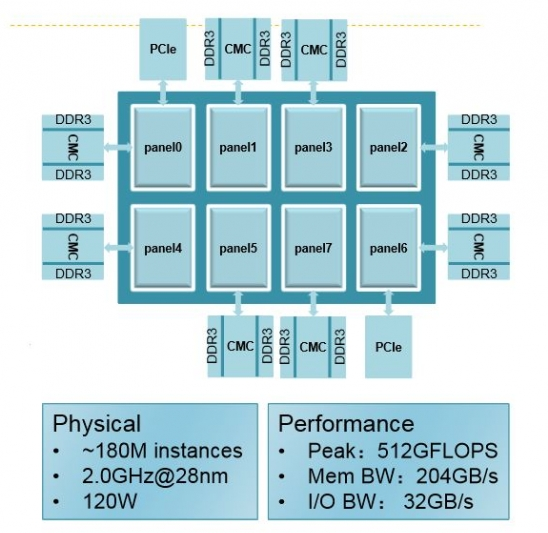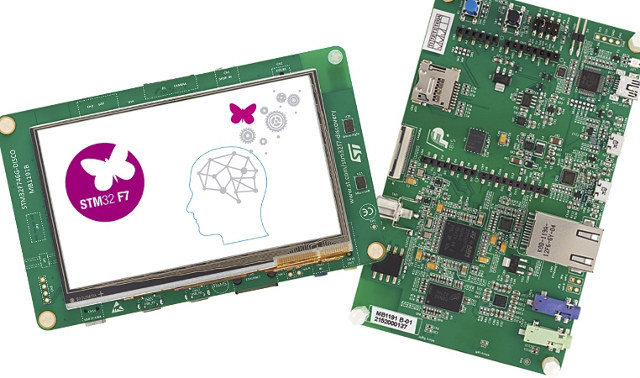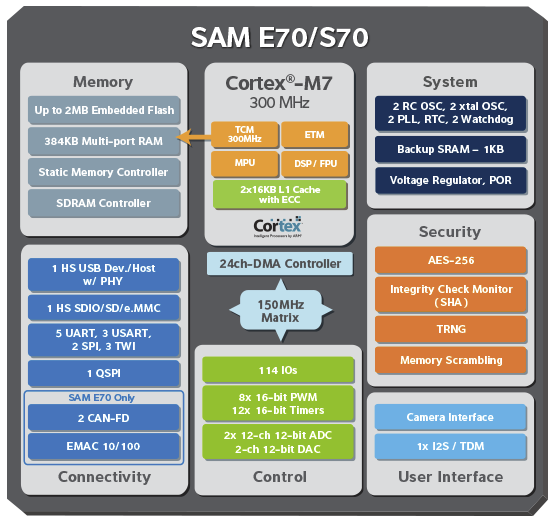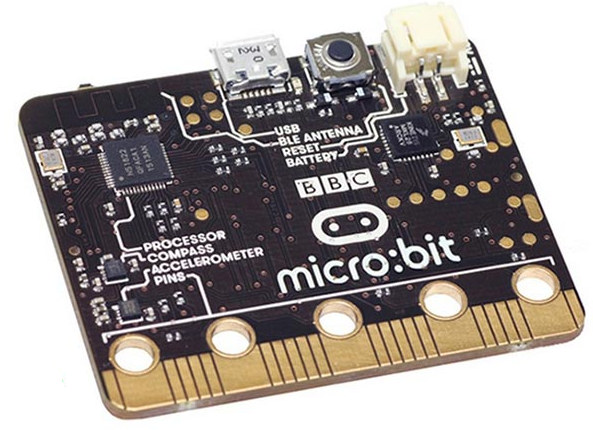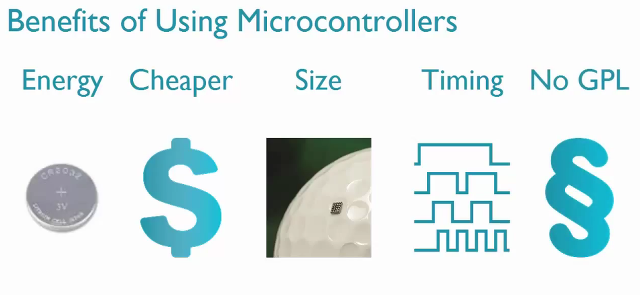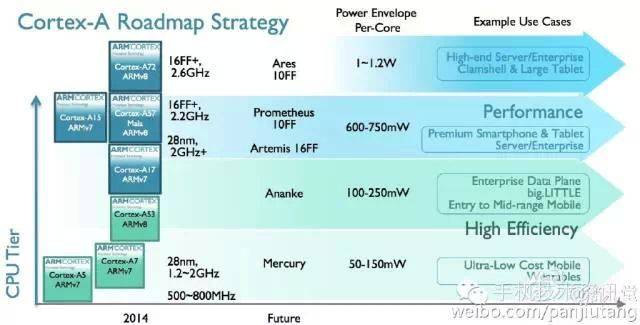Several server SoCs with a large number of ARMv8 cores have been announced in the past with products such as Cavium ThunderX featuring 48 64-bit ARM cores and EZTile TILE-Mx100 with 100 ARM Cortex A53 cores. Phytium Technology, a Chinese startup funded in 2012, has showcased its work on Mars processor with 64 custom design ARMv8 cores at Hotchips 2015 conference. Charles Zhang, director of research for Phytium, made the presentation entitled “Mars: A 64-Core ARMv8 Processor” at the conference, and a PDF version is available on Hotchips 2015 website (Conf. Day 1 section) but unfortunately it’s password-protected and only accessible by attendees. Last year, they made all presentations publicly downloadable in December, so hopefully it will be the same this year. In the meantime, I relied on an articles published on EETimes and Golem.de, the latter reproduced some of the slides, to get some of the specs and features: […]
STM32F746G-DISCO is a $49 Cortex-M7 Board with a 4.3″ LCD Display, Arduino Headers
We’ve already seen Atmel started shipping its SAM V71 Xplained Board based on its latest Cortex M7 a few days ago, but Atmel is not the company which recently introduced a Cortex M7 development kit, as ST Micro also launched an STM32F7 Cortex M7 development kit with Arduino headers and 4.3″ LCD at the end of June. The “Discovery Kit with STM32F746NG MCU” (STM32F746G-DISCO) comes with the following specifications: MCU – STMicro STM32F746NGH6 Cortex M7 MCU with 1 MB Flash, 340 KB RAM, in BGA216 package Memory – 128-Mbit (16 MB) SDRAM (64 Mbits accessible) Storage – 16 MB Quad-SPI Flash memory, and micro SD slot Display – 4.3″ 480×272 color LCD-TFT with capacitive touch screen Camera – Camera connector Connectivity – Ethernet connector compliant with IEEE-802.3-2002 USB USB OTG HS with Micro-AB connectors, USB OTG FS with Micro-AB connectors USB functions: virtual COM port, mass storage, debug port Audio […]
Atmel SAM S70 and SAM E70 Cortex M7 MCUs, SAM V71 Xplained Board Are Now Shipping
ARM Introduced Cortex M7 IP in September, and ST Micro simultaneously announced its STM32F7 Cortex M7 MCU clocked up to 200 MHz, and boards are now available, including some running Linux. But two other companies have licenses Cortex M7, Freescale with its Kinetis KV5x micro-controllers which are yet to be mass-produced, and Atmel which has recently announced their SAM S70 and E70 micro-controllers are now in mass production. SAM E70 and S70 have similar features, but E70 offers some extra interface like CAN and Fast Ethernet: ARM Cortex-M7 core running at up to 300MHz (1500 CoreMark) Up to 2MB Flash and 384kByte SRAM Floating point unit (FPU) for high-precision computing and accelerated data processing High-performance internal memory architecture with user configurable Tightly Couples Memories and System memory, and 16kB I and D-cache High Speed USB Host and Device with on-chip high-speed PHY CMOS image sensor interface AES hardware encryption engines, […]
BBC Micro Bit Educational Board Features nRF51822 ARM Cortex M0 MCU
The BBC announces its intention to give away 1 million Micro Bit to British schoolchildren a few months ago, but at the time, the specifications were not completely frozen. The broadcaster has now finalized the design which is based on an ARM Cortex M0 micro-controller. Micro Bit board specifications: ARM Cortex M0 micro-controller (Nordic Micro nRF51822 Bluetooth SoC) 5x holes for 3V, GND, and 3 GPIOs 2x user buttons, 1x reset button 25x red LED indicator lights in a 5×5 matrix Connectivity – Bluetooth LE Sensors – Compass, magnetometer, accelerometer USB – 1x micro USB port for port and programming Power – 5V via USB or battery port to connect two AAA batteries Dimensions – 4cm x 5cm On the software side, the BBC has partnered with Microsoft to develop a web based, drag and drop interface for programming called TouchDevelop. Samsung is also involved in the project as […]
DragonBoard 410c 64-bit ARM Development Board in Stock for $75
There has been a few 96Boards announced so far, and a Banana Pi96 could soon be launched, as LeMarker has just joined the Linaro Community Board Group, but so far the board that generated the most buzz was Qualcomm Dragonboard 410c, but at the time pricing was not officially disclosed, although a $75 target price was posted in several blogs. And now it seems Qualcomm 64-bit ARM board indeed costs $75, as it is listed for that price on Arrow Electronics website with a few pieces in stock. Dragonboard 410c specifications have also been further detailed: SoC- Qualcomm Snapdragon 410 (APQ8016) quad-core ARM CortexA53 @ 1.2 GHz with Adreno 306 GPU @ 400MHz System Memory – 1GB LPDDR3 @ 533MHz, Single-channel 32-bit (4.2GBps) Storage – 8GB eMMC 4.51 + micro SD 3.0 (UHS-I) Video Output – HDMI up to 1080p Video Playback -1080p@30fps HD video playback and capture with H.264 […]
AMD to Launch ARM Cortex A57 “Amur” Mobile SoCs in 2015, ARM “K12” Mobile SoCs in 2016
AMD started using ARM Cortex A5 to add TrustZone security to their x86 processor, they followed with their ARM based Opteron A1100 processor for server last year, recently they announced Hierofalcon embedded processors powered by up to eight Cortex A57 processor, and starting this year and beyond, the company will launch “ultra-low power’ mobile SoCs using ARM cores, at least according to a leaked roadmap. Two ARM families are planned: “Amur” APU planned for 2015 with: Up to 4 ARM Cortex A57 cores GCN Graphics Compute Units AMD Secure Processor (Trustzone?) ~2W TDP 20nm process, FT4 BGA package “Styx” APU planned for 2016 with: Up to two “K12” CPU cores. These should be high performance custom-designed ARM cores. Next-gen GCN Graphics Compute Units Full HSA 1.0 support (Heterogeneous System Architecture) AMD Secure Processor ~2W TDP 14 nm process, FT4 BGA package With this kind of thermal dissipation, AMD Android and […]
ARM: “Microcontrollers Are Better Because There’s No GPL”
[Update: ARM has pulled down the video and issued a statement] ARM has uploaded a video today entitled “Microcontrollers for Makers” showing the benefits of using micro-controller boards instead of processor based development boards such as Raspberry Pi or ODROID-C1, and their four first points are right on target, but the last one, as mentioned by Olimex, is completely wrong, and already made several people upset. Let’s go through the first four points: Micro-controllers are more energy efficient, so if your project is requires years on a cell-coin battery, MCUs are the way to go. MCU are cheaper too, now you can even get an MCU board for $1. They are smaller. The chip shown on the golf ball is Kinetis KL03 If you need real-time I/O, processors can’t beat micro-controller, that why people decide to connect an Arduino board to their Raspberry Pi, or products like UDOO Neo are […]
ARM Roadmap Reveals Plans for 10nm FinFET Processors
A few slides have been leaked including ARM Cortex-A roadmap, allowing to have a peak at what the future will bring after the recently announced Cortex A72, and other existing cores. There’s nothing about performance, but this provides details about the next cores codenames and their manufacturing process. ARM cores are sorted into 4 categories: High-end servers and large tablets – Cortex A72 (16nm FF+) will be supplanted by Ares core optimized for 10 nm FinFET process Premium smartphones and tablets / servers – Cortex A15 and A57 cores will give way to Prometheus (10nm FF) and Artemis (16FF) cores Enterprise data plane / big.LITTLE entry to mid range Mobile – Ananke cores should take over Cortex A17 and A53 cores. Ultra-low cost mobile & wearables – Mercury cores will replace Cortex A5 and A7 cores. There aren’t any date on the slides, but the new cores might be announced […]


